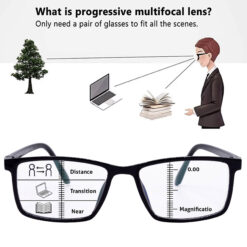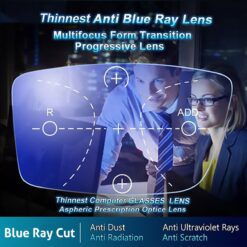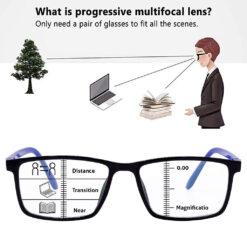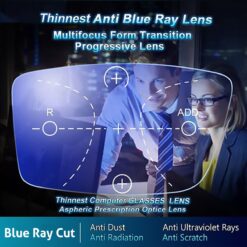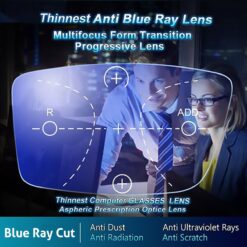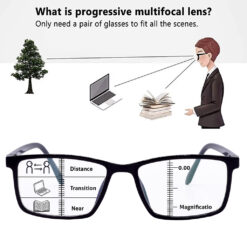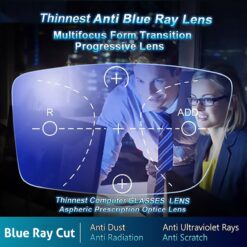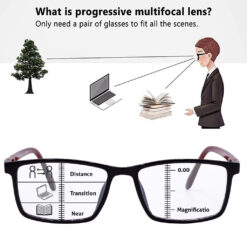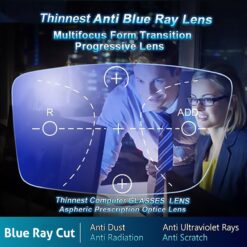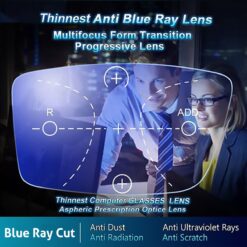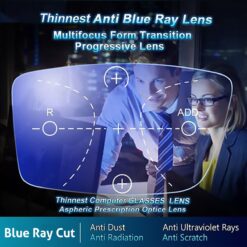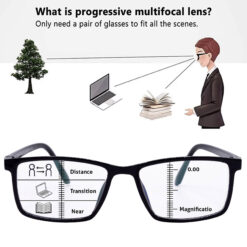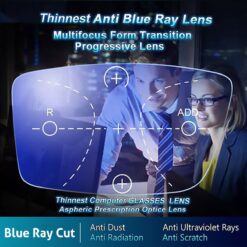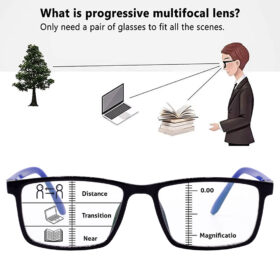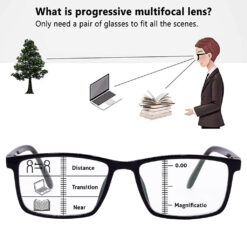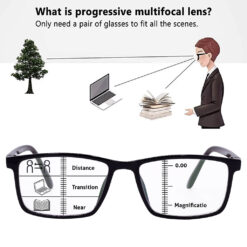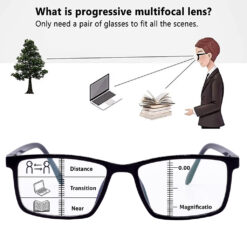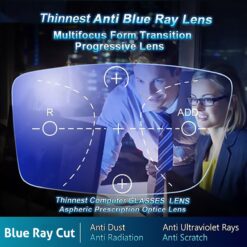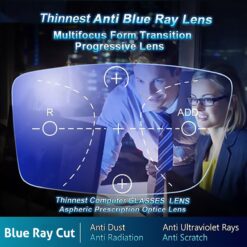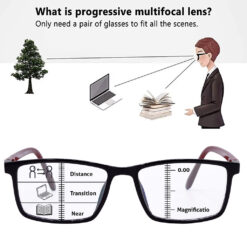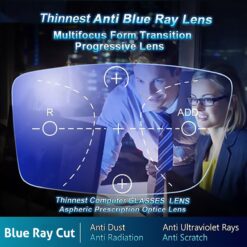Progressive Reading Glasses
Progressive Reading Glasses
Progressive Reading Glasses
Progressive Reading Glasses
Progressive Reading Glasses
Progressive Reading Glasses
Progressive Reading Glasses
Progressive Reading Glasses
Progressive Reading Glasses
Progressive Reading Glasses
Progressive Reading Glasses
Progressive Reading Glasses
Progressive Reading Glasses
Progressive Reading Glasses
Progressive Reading Glasses
Buy Best Progressive Lens Online: Clear Vision Without Compromise
Introduction: Start Here to Buy the Best Progressive Lens
Buying the Best Progressive Lens online should feel simple, not stressful, and that’s the approach here—clear choices, practical tips, and a friendly nudge where it counts so seeing far, mid, and near becomes second nature without juggling multiple pairs or squinting through the day. Progressive glasses give a seamless, no-line transition between distance at the top, intermediate in the middle, and near at the bottom, which means one pair can handle driving, screens, and reading if the fit is precise and the design suits daily habits. If presbyopia has made small text frustrating or screen time tiring, a well-fitted progressive lens with the right coatings can be a genuine upgrade that simplifies life while keeping style intact.
Progressive Glasses Meaning: What You’re Actually Getting
Progressive glasses are multifocal lenses that pack distance, intermediate, and near vision into one smooth surface without the hard lines of bifocals or trifocals, so the eyes glide through zones naturally for tasks like phone use, laptop work, and reading labels. Instead of switching frames or peering over lines, progressives deliver a gradual shift in power, which feels more natural once the brain learns where to look and how to angle the head slightly for each zone. The top portion is tuned for far vision, the center for computer range, and the lower part for reading—this layout lets daily routines flow without constant swapping or visible lens segments.
Varifocal, Multifocal, PAL—Different Names, Same Idea
You’ll see the same concept called varifocal lenses, multifocal lenses, or PAL (progressive addition lenses), so don’t stress over the label—the functionality is consistent: a gradual increase in power from top to bottom for all-distance clarity. The design removes the old-school lines while maintaining distinct use zones across the lens, so it looks like a regular lens but performs like three in one.
How Progressive Lenses Work: Distance, Intermediate, Near
The lens starts with the distance prescription up top, transitions to intermediate power through the middle, and reaches full reading addition at the bottom, giving a continuous corridor that the eyes and head align with during specific tasks. That corridor is engineered to balance clarity with peripheral control; premium designs widen the usable areas and reduce the blur at the sides that first-timers sometimes notice. Getting this right depends on precise measurements and frame selection so the corridor aligns with natural gaze—more on that in the fit section below.
Why the “No-Line” Design Matters
No visible segments means a cleaner look and a smoother visual experience when shifting between tasks, which many users find more comfortable and more confidence-boosting than bifocals or trifocals with visible lines. The absence of abrupt power jumps generally helps eyes adapt to different distances more gracefully, provided the fitting height and pupillary distance (PD) are set accurately. If style and subtlety matter, the no-line aesthetic is a quiet win that also aligns with how people use screens and phones throughout the day.
Best Progressive Lens: Who It’s For and When It Shines
If near work has become a strain or small text suddenly looks fuzzy, especially after 40, progressives are designed to correct presbyopia while still covering distance needs like driving or outdoor activities. They’re also a solid choice for those who already wear single-vision glasses and don’t want to carry a separate reader, since progressives combine all needs in one pair without compromise on looks. For mixed days—WhatsApp messages, spreadsheets, quick reads in the kitchen—this one-pair solution streamlines life and reduces eyewear juggling.
Signs You Need Progressives: Presbyopia and Beyond
Holding the phone farther away to read, increasing font sizes, or experiencing fatigue after close work are common signs that presbyopia has arrived, and this is exactly what progressive lenses are built to handle. If distance vision also needs correction, progressives avoid the constant on-off routine by letting the eyes use different zones on the same lens throughout the day. Even for those who dislike the look of bifocal lines, progressives solve both function and style in one go with a more natural visual flow.
Progressive Reading Glasses vs Single-Vision Reading
Single-vision readers are fine for short bursts of near work, but they won’t cover computer range or distance, which leads to swapping or removing glasses repeatedly throughout the day. Progressive reading glasses solve that by adding intermediate and distance zones so the view doesn’t collapse when looking up from a book to the TV or from a laptop to someone across the room. If the day involves varied tasks, progressives save time and hassle while keeping posture and head movements more natural once adaptation kicks in.
Progressive Lens Benefits That Make Daily Life Easier
The biggest benefit is convenience: one pair for everything—phone, laptop, cooking, meetings, and evening TV—without juggling multiple frames or peering over lenses awkwardly. The aesthetic benefit of no visible lines helps many feel more comfortable and youthful while also providing a smoother visual transition across tasks as the prescription changes gradually instead of abruptly. With a proper fit, progressives can reduce eye strain associated with frequent refocusing, especially when combined with anti-reflective and blue light coatings for heavy screen users.
Seamless Vision At All Distances
Because progressives blend power zones, the eyes find a natural route from far to near without harsh jumps, which makes everyday motions—like glancing from dashboard to phone to menu—feel more fluid. The intermediate zone is especially valuable in today’s screen-centric routines where 50–70cm work is constant, giving crisp mid-range without sacrificing distance sharpness. This “all-in-one” design simplifies life while supporting comfort, provided corridor selection and frame geometry match how the wearer actually uses their eyes through the day.
One Pair, Many Tasks—From Phone to Laptop to Driving
Progressives shine in mixed-use days: meetings, spreadsheets, quick texts, and evening reading all happen without swapping glasses, keeping focus and flow intact. Driving benefits from distance clarity up top, while car consoles and maps sit comfortably in the intermediate zone to minimise refocusing strain. At home, recipe reading and TV watching feel more natural because the zones are where the eyes expect them once habits adjust slightly.
Aesthetic Edge: No Visible Lines
Without the visible segments of bifocals or trifocals, progressives look like regular glasses, which many prefer for a cleaner, modern appearance that doesn’t “announce” multifocals. This design also reduces abrupt optical jumps between zones that can be visually jarring in lined lenses, supporting a more natural feel once properly fitted. Style meets function here, and that balance is a big reason progressives remain popular among presbyopes.
Progressive Lens Advantages and Disadvantages (Honest View)
Real talk: progressives are incredibly convenient, but they’re not magic—there’s an adaptation period and the sides of the lens can have distortions depending on the design and fit. The biggest win is replacing multiple pairs with one, while the biggest challenge is learning to use the corridor and turning the head slightly for crisp views at different distances. Cost is higher than single-vision or lined bifocals, but premium designs and proper fitting reduce discomfort and expand the usable area, which many consider worth it over years of daily use.
Advantages Worth Paying For
One pair handles near, intermediate, and distance with a sleek, line-free look that feels modern and reduces eyewear juggling across a busy day. The gradual power change is more comfortable for many users than abrupt jumps and can support better posture compared to readers that force constant on-off switching. With anti-reflective and blue light options, they also cut glare and screen fatigue, which aligns with how most of us use devices now.
Disadvantages to Expect (and How to Minimise Them)
Expect a learning curve of days to a couple of weeks where peripheral blur and slight distortion can appear during side glances, stairs, or quick head movements. Some frame shapes don’t suit strong prescriptions or very narrow fitting heights, which can compromise corridor width and comfort if chosen poorly. Costs are higher than basic lenses due to complex design and fitting demands, but getting measurements right and choosing a suitable design tier makes a night-and-day difference.
Adaptation Tips That Actually Work
Wear them full-time for the first week and point the nose at what needs to be seen rather than sliding the eyes sideways through the edges. Keep the frames properly adjusted so the distance zone sits directly in front of the pupils—minor tilt or drop can shift zones and cause unnecessary distortion. For stairs or curbs, look through the top (distance) zone, not the lower reading area, to avoid magnified steps during early adaptation.
Best Progressive Glasses Online: What To Look For
A great outcome depends on three things: accurate PD, correct fitting height, and a frame that allows enough lens depth for the corridor to breathe. Choose designs that match daily routines—wider intermediate for screen-heavy work, or balanced designs for mixed tasks—so the sweet spot lands where it’s needed most. Premium corridor options improve peripheral control, expand clear zones, and ease adaptation for many first-timers or those sensitive to swim effect.
Frame Fit, Lens Height, and PD: The “Fit Trifecta”
Frames should have adequate lens depth to accommodate full corridor length; extremely shallow frames can cramp the reading zone and increase compromise. PD and fitting height must be measured carefully so each zone aligns with natural gaze, which directly affects clarity and comfort throughout the day. If frames slip, zones shift—getting proper adjustments is as important as the lens design itself.
Standard vs Premium Corridor Designs
Standard designs do the job, but premium designs typically widen the intermediate and near zones and smooth peripheral transitions, which many users feel instantly in daily use. For complex prescriptions or sensitivity to distortion, a better design can be the difference between “fine” and “fantastic” in terms of clarity and comfort. If screen time is heavy, investing in a design optimised for intermediate can pay off every single hour of work.
Thin & Light Materials: Comfort Over Hours
High-index options reduce thickness and weight for stronger prescriptions, keeping the glasses comfortable over long days while maintaining optical accuracy across zones. Combine with quality anti-reflective coatings to reduce glare and halos, especially under night lighting or bright screens. Comfort compounds—lighter, clearer, and stable fit means better adoption and fewer adjustments later.
Progressive Lens Blue Cut: Screen-Friendly Comfort
Blue light filtering has become a go-to add-on for progressive wearers juggling laptops and phones, aiming to reduce visual fatigue and improve comfort under heavy screen exposure. Pairing blue light filters with anti-reflective and UV coatings enhances clarity, cuts distracting reflections, and supports long sessions under artificial light without that end-of-day eye burn. For those who work late, some users also seek better sleep quality from reduced blue-violet exposure, though individual responses vary and coatings should be chosen based on actual usage patterns.
Blue Light Trends for 2025–2026
The market is expanding quickly with more prescription options that blend blue light filtering, AR, and UV into one package for on-screen clarity with minimal colour shift and improved durability of coatings. Expect more personalised lens options with variable filtering strengths and faster, cleaner AR layers tailored to high-device lifestyles as work and entertainment remain screen-centric. Photochromic lines that filter blue-violet light indoors and more outdoors are also evolving, pairing convenience with protection in a single lens choice for everyday use.
Anti-Reflective and UV: Small Coatings, Big Comfort
Good AR dramatically improves visual comfort by reducing bounce-back reflections, which makes text look crisper and colours more lifelike on displays. Full UV protection is table stakes now, and many modern lenses integrate this into the lens or coating stack for healthier long-term wear—especially useful for daytime commutes and outdoor breaks. Combined with blue light filtering, these choices round out a progressive lens that feels made for a hybrid work-life routine.
When Blue Light Progressives Make Sense
If the day is split between laptop, phone, and evening TV—with occasional outdoor use—a blue light + AR progressive is a strong default that supports comfort and reduces glare-related strain. Those sensitive to bright office lighting or night driving glare may also appreciate AR stacks tuned for sharpness and reduced halo effects. For minimalists who prefer one pair to do it all, this combo is practical and future-friendly as screen time continues to rise.
Progressive Glasses Clear On Top: Using Zones Like a Pro
Think of the lens as a vertical map: top for far, middle for computer, bottom for near—keeping the chin slightly up for distance and slightly down for reading helps land in the right zone fast. Side-to-side eye swings skim into the periphery where distortions live, so small head turns keep views razor-sharp through the corridor. Once this becomes muscle memory, switching between tasks feels smooth and almost automatic during a normal day.
Computer Zone vs Reading Zone: Head Turns, Not Eye Swings
For monitors, look through the middle corridor, aligning nose and screen so the lens does the heavy lifting without forcing eye rolls to the sides. For phone or books, drop the gaze and chin together slightly so the lower zone takes over and fonts pop without leaning forward or squinting. That tiny habit change keeps clarity consistent and cuts down early frustration during the adaptation window.
Quick Re-Training Techniques
Wear them consistently for the first week, practice stair navigation using the top zone, and spend a few minutes daily doing distance-to-near shifts so the brain maps the corridor. Keep frames adjusted; a tilt or low bridge drop can nudge zones out of place and make things feel “off” even with a perfect prescription. If dizziness persists beyond two weeks, a fitting check often reveals a simple alignment fix that restores comfort.
Multifocal Progressive Glasses vs Varifocal vs Trifocal
Varifocal and progressive refer to the same no-line concept, while trifocals have visible segments that jump between powers and show lines on the lens. Most adults prefer progressives for the natural look and smoother transitions, especially for mixed screen and daily tasks where abrupt jumps feel distracting. Unless there’s a specific clinical need for lined segments, progressives are generally the more comfortable everyday choice for presbyopia.
Why Most Adults Prefer Progressives Over Bifocals/Trifocals
No lines, better aesthetics, and fewer abrupt power changes mean a more modern visual experience as tasks shift constantly between distances across a day. By integrating an intermediate zone for screens, progressives match how people actually work now, while old bifocals can leave that range under-served. That intermediate clarity is the quiet hero for productivity, posture, and comfort during long sessions at a desk.
Progressive Glasses Brands: What Differentiates Them
Brands differentiate through corridor design, how they manage peripheral distortion, and how much customisation they offer for lifestyle and posture patterns. Premium lines invest heavily in widening the usable intermediate and near zones, smoothing transitions, and fine-tuning for specific habits like heavy computer use or frequent driving. The right question isn’t just “which brand,” but “which design tier and corridor width fits the day-to-day routine best” for comfort that lasts.
Design Philosophy: Wider Corridors and Peripheral Control
Advanced designs shape distortion into areas the eyes don’t use much while opening up clear fields where they matter, especially across the middle of the lens for screens. This is why two progressives can feel different even with the same prescription—the geometry controls how natural the world looks while moving and scanning. The best fit feels calm: minimal swim, clear text, stable edges when turning the head.
What to Ask Before You Buy
Ask about corridor width for intermediate work, recommended frame depths for your prescription, and how remakes/adjustments are handled if adaptation takes longer than expected. Clarify which coatings are included and how the lens handles glare at night or under bright office lights to avoid surprises. These small checks prevent compromise and make the first week smoother and more confident.
Affordable Progressive Glasses: Getting Value Without Guesswork
Great outcomes don’t require the priciest tier, but cutting corners on design or fit can lead to frustration—target a well-reviewed mid-tier with strong AR and blue light if screens dominate the day. Spend where it matters: corridor quality, accurate measurements, and coatings that actually reduce glare and smudges for clean, crisp views all day. Look for fair remake policies and support for fit tweaks, since micro-adjustments often transform “okay” into “amazing” comfort.
Where Budget Makes Sense—and Where It Doesn’t
Save on frame fashion frills if needed, but not on precise measurements or AR stacks that influence daily clarity and eye comfort hour by hour. If the prescription is strong or the lifestyle is screen-heavy, premium corridors tend to feel worth it quickly in reduced fatigue and easier adaptation. Think long-term: quality progressives serve daily for years, so small upgrades pay back every single day they’re worn.
Best Place To Buy Progressive Glasses Online
Look for clear measurement guidance (PD and segment height), virtual try-on tools, and easy-to-understand lens tiers mapped to daily use—screens, driving, or reading. The ideal store helps match frame depth to corridor needs and recommends coatings based on lighting and device habits, not just generic bundles. Responsive support for fit questions and quick adjustments seals the experience and speeds up adaptation for first-time wearers.
Measurements, Virtual Try-On, and Support
Virtual try-ons help with style and size, while measurement workflows ensure the optics line up correctly with natural gaze to unlock the full benefit of the design. Good support teams can spot issues from a quick description—like “near zone feels too low”—and suggest simple tweaks that resolve it fast. This buyer journey replaces guesswork with clarity so the first wear feels closer to “wow” than “wait and see”.
How to Share Prescription & PD Correctly
Upload a clear, recent prescription and double-check PD from a reliable method; if the platform offers guided PD capture, follow it carefully in good lighting and neutral head posture. If possible, include your typical working distance for screens so recommendations can tilt towards wider intermediate comfort if that’s the main use case. Precision here directly translates into daily comfort once the glasses arrive.
Progressive Lens Benefits for Daily Tasks
For cooking, reading recipes lives in the lower zone while glancing up to the stove or TV stays sharp in intermediate or distance, which makes multitasking feel smooth. Video calls benefit from a clear intermediate for the screen and quick shifts to notes or the phone with minimal head motion once habits set in. Driving combines stable distance for the road with readable consoles and maps in the mid-zone, reducing constant refocusing effort.
Progressive Lens Buy Online: Step-by-Step
Choose a frame with enough vertical depth, select a lens tier matched to daily routines (balanced vs screen-focused), and add anti-reflective plus blue light if screens are frequent. Upload prescription and PD with care, confirm fitting height guidance, and opt for thin-and-light materials if the prescription is stronger for long-day comfort. On arrival, wear full-time for 7–10 days, keep frames properly adjusted, and follow the zone-usage habits to speed up adaptation.
Pick Your Frame, Select Lens Tier, Add Coatings
Frames should fit comfortably and allow the corridor to sit naturally; lens tiers decide how wide and forgiving the clear zones feel across tasks. Add AR to tame reflections and blue light filtering if work involves long device sessions, pairing clarity with comfort that lasts into the evening. This combination aligns with most modern routines and keeps eyes fresher through the day.
Upload Prescription and Confirm Measurements
Double-check sphere, cylinder, axis, add power, and PD values, ensuring they’re recent and captured correctly so the lenses are ground precisely for each eye. Provide any additional notes like typical screen distance or reading preferences if the platform requests them, which helps refine the recommendation. The better the inputs, the easier the outcome.
Are Progressive Glasses Worth It?
For anyone juggling near, intermediate, and distance every day, progressives usually earn their keep quickly in convenience, posture, and fewer eye strain moments. The higher price reflects the complex design and fitting, but the payoff is one pair that works almost everywhere with a clean look and fewer compromises in real life. If screens dominate the day, the value rises further with intermediate clarity and proper coatings doing quiet, constant work in the background.
Cost vs Convenience: Real-Life Scenarios
If a typical day involves laptop hours, phone checks, and evening reading, single-vision readers will force swaps and awkward postures, while progressives just flow from task to task. For drivers who also work on screens, progressives integrate both needs without carrying extra frames, saving time and attention when it matters. Over months and years, that friction-free clarity tends to feel like a lifestyle upgrade rather than a mere optical purchase.
Progressive Glasses Blue Light: Work-From-Home Essential?
Blue light progressives with quality AR make device-heavy days more comfortable by cutting harsh reflections and filtering blue-violet ranges that contribute to visual fatigue for many users. As hybrid work persists, expect continued innovation in coatings and photochromic options that filter indoors and boost outdoors, keeping one pair truly do-it-all. If evenings are screen-heavy, this is a smart, future-ready choice that helps sustain clarity longer.
Best Progressive Glasses in India: What Matters Most
Prioritise comfort for long, screen-centric days, with designs that widen intermediate clarity and coatings that reduce reflections under bright indoor lighting. Thin-and-light materials support wearability in warm conditions and long commutes, while durable AR stacks keep lenses looking clear despite frequent cleaning. Choose sellers who support accurate measurements and quick adjustments so early wear feels confident and stable.
Progressive Lenses vs Single-Vision: Which For You?
If the day is mainly one distance—like dedicated reading sessions—single-vision can be simpler, but most people switch distances constantly and benefit more from progressives’ versatility. For mixed tasks, progressives reduce friction and improve posture by aligning zones to where the eyes naturally need clarity across the day. The key is matching design to lifestyle rather than chasing a generic “best”—personal use wins every time.
Care, Cleaning, and Longevity: Keep Clarity Crisp
Use a microfiber cloth and proper lens cleaner, avoid harsh tissues or clothing that scratch coatings, and store glasses in a case when not in use to protect alignment. If frames loosen or slip, get a quick adjustment—keeping zones in place matters more with progressives than with single-vision lenses. Treat the coatings well and they’ll pay back in cleaner views and fewer smudges day after day.
Final Checklist Before Checkout
-
Frame depth supports full corridor and your style priorities.
-
PD and fitting height captured with care; prescription is recent.
-
Lens tier aligned with daily use—balanced or screen-optimised.
-
AR + blue light filtering selected if devices dominate your day.
-
Support and remake policy in place for a stress-free adaptation window.
Conclusion
Progressive lenses condense life’s visual needs into one pair—distance, intermediate, and near—without visible lines, making day-to-day tasks feel smoother and more natural once fitted correctly and worn consistently for the first week or two. The smartest buys combine a corridor tuned to daily routines with anti-reflective and blue light filtering that keep screens comfortable and colours crisp, backed by accurate measurements and responsive support to fine-tune the fit if needed. With those pieces in place, progressives don’t just fix presbyopia—they free up focus, cut the friction of swapping glasses, and keep style intact while solving real problems quietly in the background.

